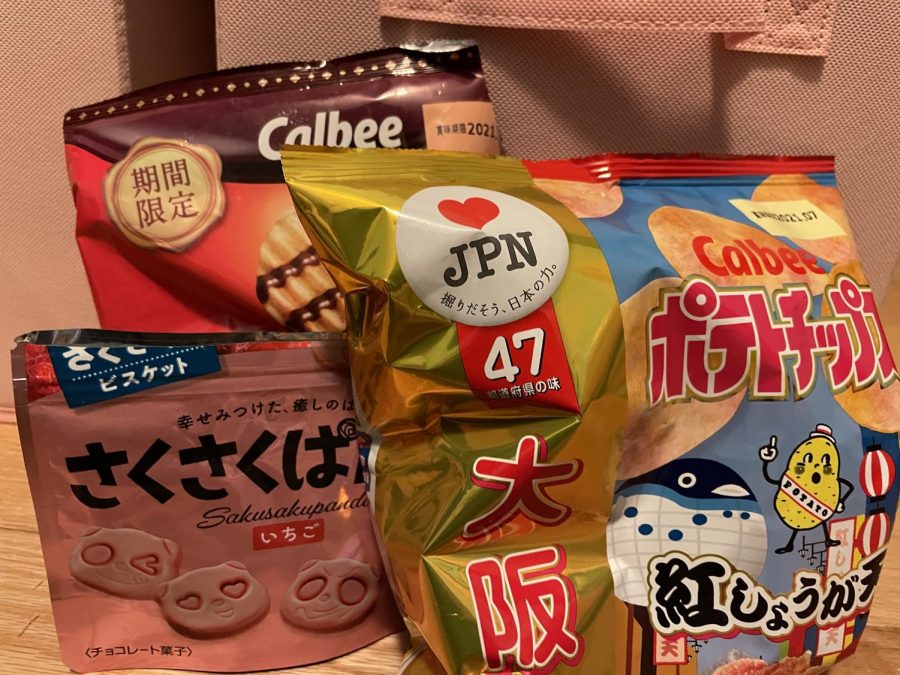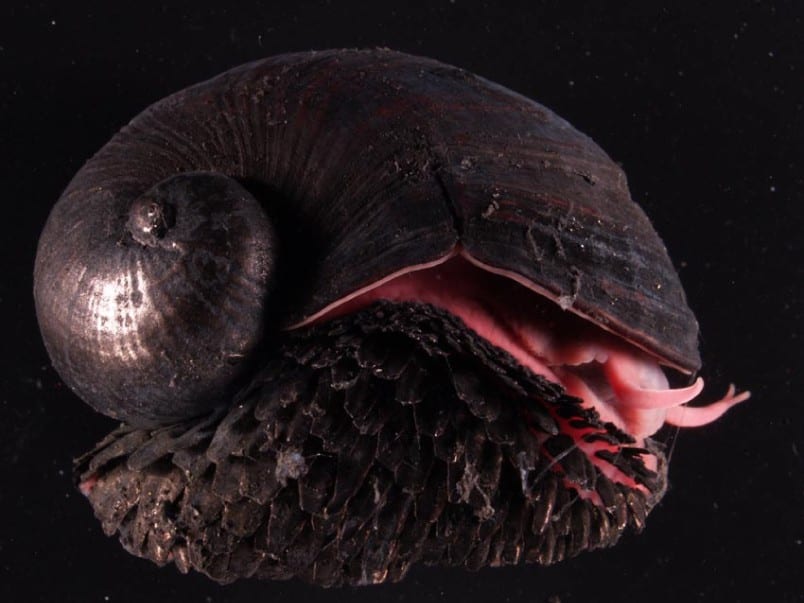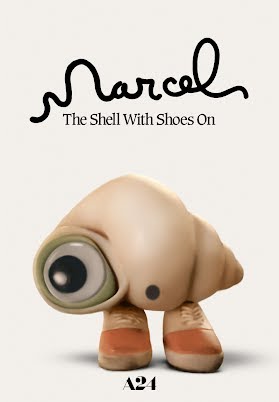Traveling Through Cuisine: Tokyo Treat Subscription Box Review
Calbee chips and Sakusaku Panda Cookies are some of the snacks that can be found in a Tokyo Treat subscription box. Photo courtesy of Brittany Eldridge
February 25, 2021
– Brittany Eldridge
It is during the college years, in particular, that students desire to travel and see the world. Yet, the COVID-19 pandemic has made this desire dangerous, and likely impossible. Still, individuals have found ways to explore other cultures without leaving their homes. One available option for college students is a snack subscription box called Tokyo Treat.
Students who want to receive snacks from Japan can subscribe to Tokyo Treat and receive a new box each month. The products included in the box are not chosen at random, but are, instead, selected based on each month’s theme. Monthly themes typically coincide with holidays and festivals celebrated in Japan during that particular month. For example, March’s box theme was Girl’s Day. Girl’s day, also known as Doll’s Day, is celebrated on Mar. 3 each year. A few days before this holiday begins, girls and their mothers set up a display of dolls, which represent the emperor and empress. Girls often throw parties leading up to Girl’s Day. Common food brought to these celebrations are different types of rice crackers, which were included in the Tokyo Treat March Box.
The boxes explore holidays that U.S. college students would not otherwise have learned about, but Tokyo Treat does tend to focus on the same holidays each year. Last year’s March box, for example, also included items related to Girl’s Day. Yet, Tokyo Treat could have focused on other festivals that take place in Japan in March, such as the cherry blossom and plum blossom festivals that also occur at this time of year.
Each box comes with a booklet which describes each item in the box, as well as photos of individuals displaying their boxes. The section of the booklet that I found most interesting provided insight on how individuals in Japan would spend each holiday. For example, on Valentine’s Day, they may choose to visit the Ghibli Museum. The booklet even included photos of these particular tourist attractions. The booklet would have been more educational if it provided more background information on the holidays and themes.
For example, March’s theme was a Girl’s Day bento. Readers may have liked to learn more about how to build a bento and where to buy the food items and bento boxes. Individuals with food allergies, sensitivities, and dietary restrictions should also be cautious in buying these boxes because while a description of the items is included in the booklet, the full ingredient list is not included. In addition, Tokyo Treat occasionally makes mistakes regarding these booklet descriptions. In the February box, two products were listed as not containing shrimp and squid, but they both contained shrimp and squid.
Tokyo Treat includes a rather even mix of sweet and savory items in its boxes. The box does tend to include snacks that will be familiar to American consumers, such as potato chips, chocolates, and sodas. One notable item from the February box was the Sakurasou Strawberry Panda Cookies.These butter cookies were coated in strawberry flavored chocolate and each panda cookie displayed a different facial expression. An item from the March box that was of particular note was the Tohato Peach Caramel Corn. This fluffy and light corn snack was shaped like a cheese puff, had a sweet peach taste, and consisted of a larger serving size than many of the other snacks. Some of the more unusual snacks included in the boxes were squid crackers, curry crackers, and custard-flavored marshmallows.
Tokyo Treat boxes give students the opportunity to test their culinary courage, as the snacks often differ from snacks typically enjoyed in the United States. Some students might hesitate to try the fish-shaped cake, or Taiyaki, included in the February box. Yet, the Taiyaki had the familiar airy and crispy texture of a Kit Kat. Because the box includes small portions of 12 to 17 snacks, students can easily take these snacks with them when they are on the go, and do not have to worry about wasting them if they do not like them.
If an individual really likes a particular snack included in their box, they can purchase the snack on Japan Haul. Tokyo Treat and Japan Haul are connected services. Japan Haul allows individuals to purchase the snacks they like when they like, without being tied to a subscription. In addition, Tokyo Treat subscribers earn Japan Haul points by purchasing their subscription boxes. They can then use those points to buy products on Japan Haul.
Tokyo Treat currently offers two subscription box types: Classic and Premium. The Classic Box includes 12 snacks, including popular snacks and candy. The Premium Box includes 17 snacks, such as exclusive Kit Kats, Pocky, and anime snacks, as well as a bottled drink. Students pay for their boxes monthly, or they can prepay for the boxes and save up to $42. The Classic Monthly Subscription costs $25, while the Premium Monthly Subscription costs $35. The Premium Subscription includes a lot more variety and more name-brand items, despite only costing $10 more a month. Payments can be processed through PayPal, so students can keep track of their payments and can ensure that their credit card information is not shared with Tokyo Treat. The items are shipped in durable packaging and most items are nonperishable and do not require refrigeration. The box is small and can easily be stored in an apartment or dorm room.
One drawback to purchasing these boxes during the pandemic is that shipping prices keep steadily increasing. Tokyo Treat recently increased its shipping price by $2, so subscribers must now pay $12.50 for express shipping for each box. All Tokyo Treat boxes are now being shipped only through a courier service because of the pandemic. Though Tokyo Treat could have notified subscribers of these changes more promptly, there are some benefits to using an express shipping method. It is possible for subscribers to track the boxes and subscribers are notified if there are any shipping delays. Students can track their box’s journey, and the boxes quickly arrive from Japan to Boston through the courier service (typically within a couple of days).
For students interested in more traditional snacks and teas, Tokyo Treat just unveiled a new subscription service called Sakurako. This subscription box contains 15 to 20 traditional snacks, such as konpeito, matcha, and mochi, as well as small decorative plates and chopsticks. For students interested in “journeying” to other regions of the world, MunchPak selects snacks and drinks from different countries to include in its subscription boxes.
-4 out of 5 Stars






















